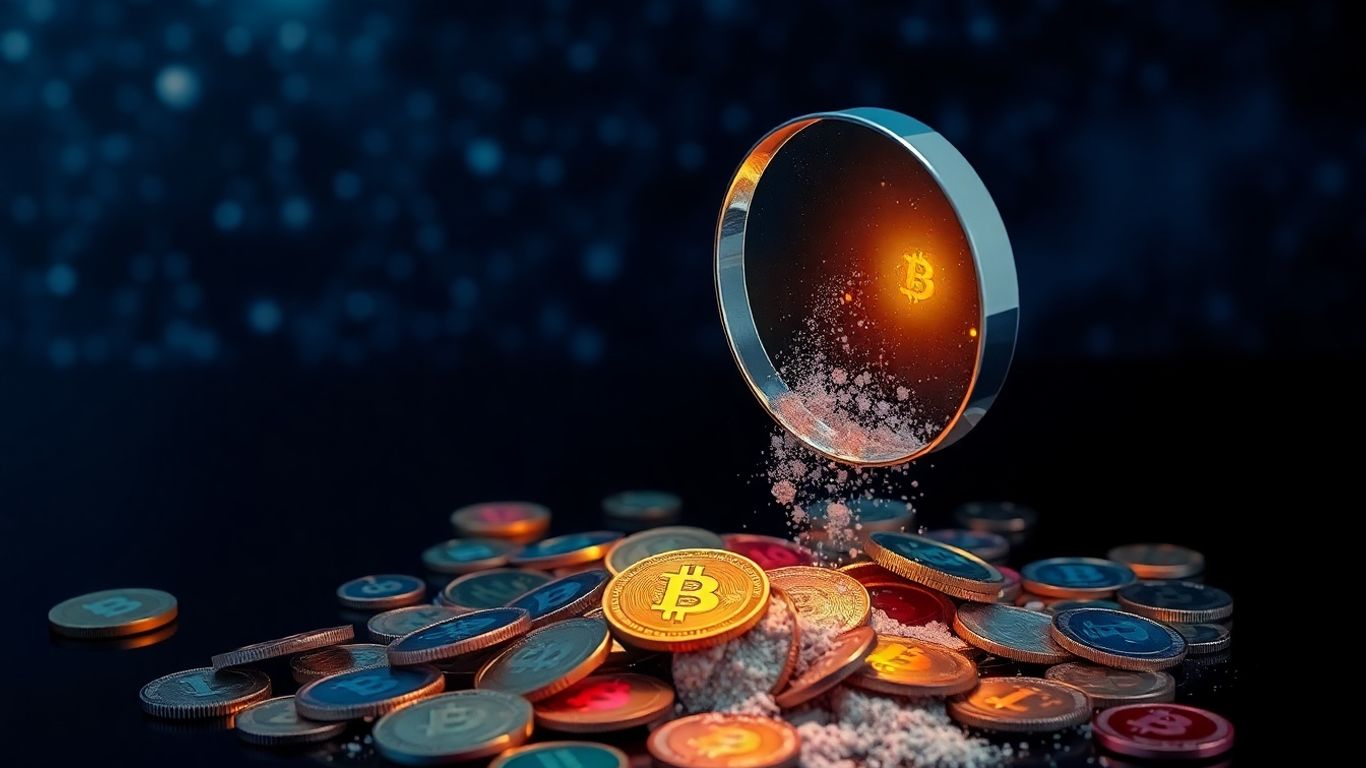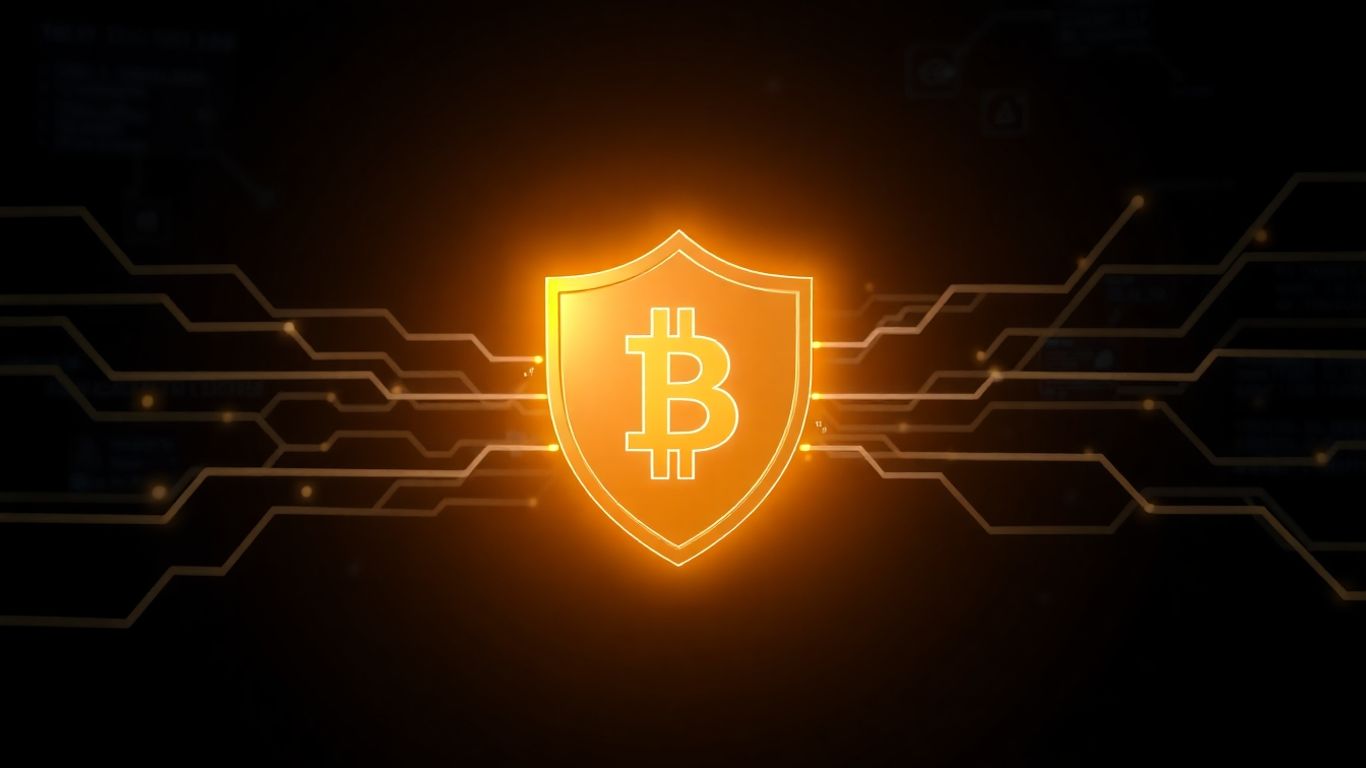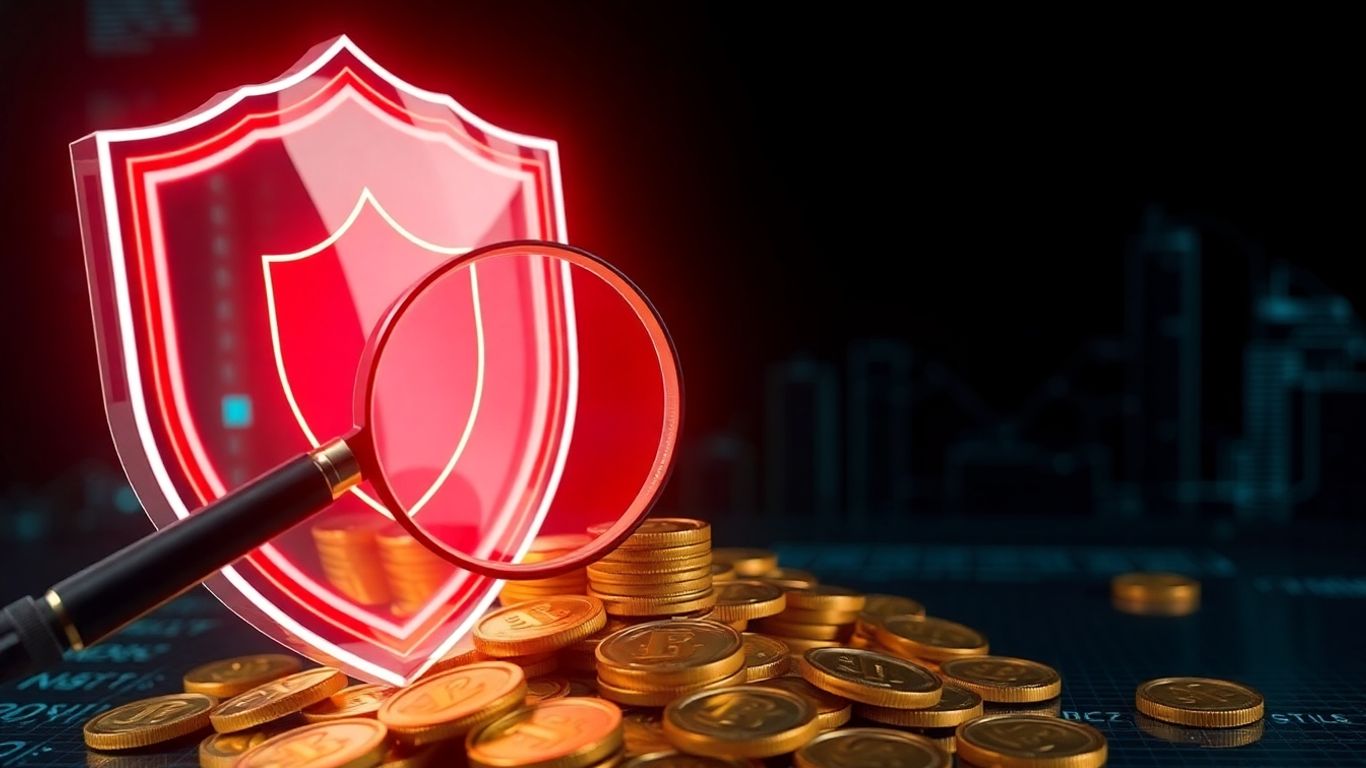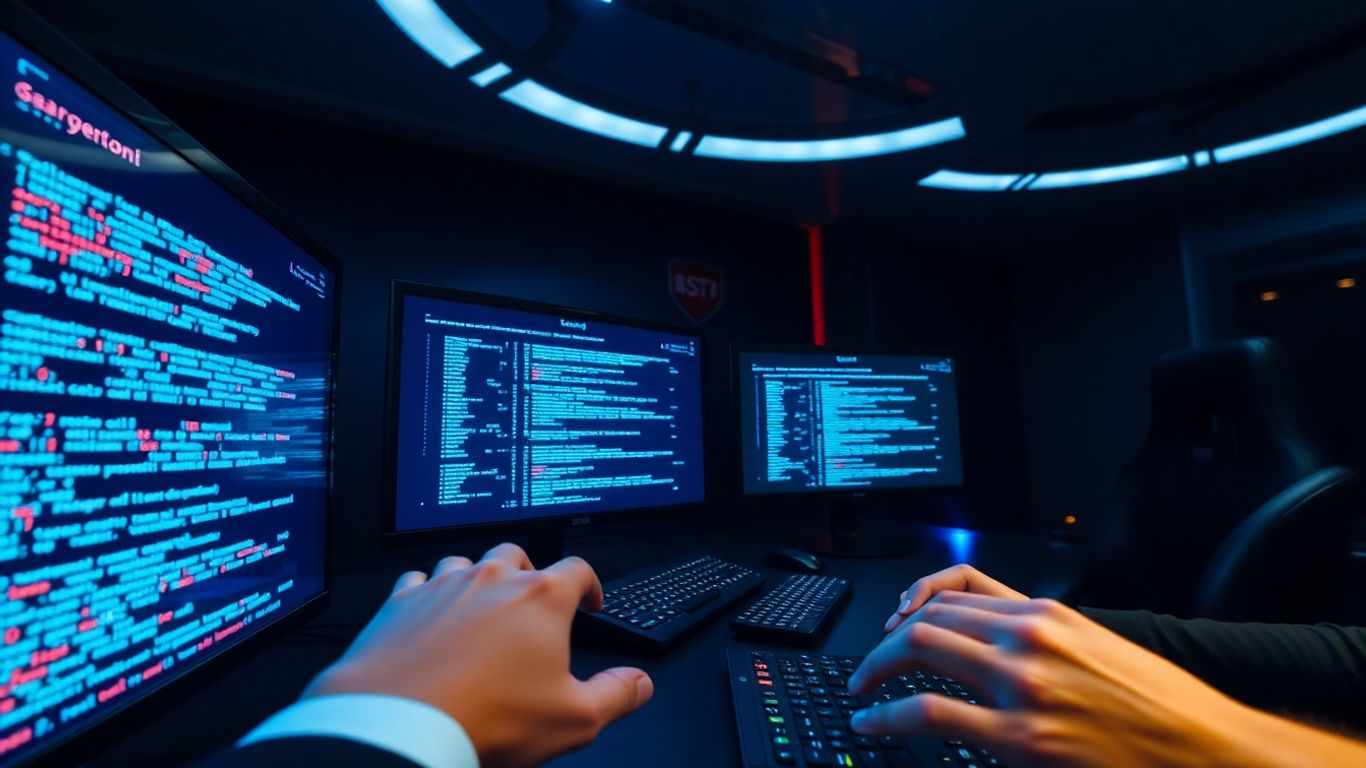[ newsletter ]
Stay ahead of Web3 threats—subscribe to our newsletter for the latest in blockchain security insights and updates.
Thank you! Your submission has been received!
Oops! Something went wrong. Please try again.
Use our ultimate rug pull scanner to protect your crypto investments. Learn how to identify and avoid DeFi scams with our comprehensive guide.





Crypto rug pulls are a big problem. It feels like every week there's a new story about someone losing all their money because a project just vanished. It's tough out there, and keeping your investments safe is a real challenge. Luckily, there are tools that can help. We're going to talk about how a rug pull scanner can be your best friend when looking at new crypto projects. Think of it as a detective for your crypto, helping you spot the bad guys before they get away with your cash.
Crypto rug pulls are a pretty nasty surprise, and honestly, they're one of the biggest headaches in the digital asset world right now. Imagine you've put your hard-earned cash into what looks like a promising new coin, only for the creators to vanish overnight, taking all the money with them. That's essentially what a rug pull is – a type of exit scam where the project developers disappear, leaving investors holding worthless digital tokens. It's like someone yanking the rug right out from under your feet, leaving you to fall flat on your face.
A rug pull happens when the people behind a cryptocurrency project suddenly abandon it. They usually hype up a new token, attract a lot of investors, and then, when the price is high, they cash out their own holdings or drain the project's funds. This leaves the token's value plummeting to zero. It's a deliberate act to defraud people who believed in the project. The core of a rug pull is the malicious intent to steal investor funds by abandoning a project.
These scams often happen on decentralized exchanges (DEXs) because it's relatively easy to list a new token there. Here's a common way it goes down:
The ease of creating tokens and listing them on decentralized platforms, combined with the rapid pace of the crypto market, creates fertile ground for these types of scams. Many investors, eager for quick profits, may overlook the warning signs.
While the end result is the same – lost money – rug pulls can manifest in a few ways:
So, you've heard about rug pulls and want to avoid becoming another victim. That's smart. The good news is, you don't need to be a coding wizard to spot trouble. Tools like a rug pull scanner can be your best friend here. Think of it like a pre-flight check for your crypto investments. You input the token's contract address, and the scanner does the heavy lifting, digging into the code to find suspicious stuff. It's not magic, but it's pretty close to having a security expert look over the project for you.
These scanners look for common red flags that often signal a rug pull is brewing. They check things like whether the project owners can still change the contract rules on a whim, if there's a crazy amount of tokens held by just a few wallets (making a sudden dump easy), or if the contract has weird ways to create new tokens out of thin air. It's all about getting a quick, objective look at the technical side of a project before you commit your hard-earned cash.
Using a scanner is usually pretty straightforward. First, you need the contract address for the token you're interested in. You can usually find this on the project's official website or their social media pages. Sometimes, you might need to look it up on a blockchain explorer like Etherscan or BscScan to be absolutely sure you have the right one. Once you've got that address, you just paste it into the scanner's search bar.
Here’s a quick rundown of the typical steps:
It's important to remember that a scanner is a tool, not a crystal ball. It gives you probabilities and flags potential issues, but the final decision is always yours. Don't just blindly trust the score; understand why it flagged something.
When you get a report back from a scanner, it's not just a bunch of numbers. You need to know what to look for. Scanners often give a score or a risk assessment, but the real value is in the details.
Here are some key things to pay attention to:
A scanner's report is a guide, not a guarantee. It highlights technical risks based on the contract's code. Always combine this information with your own research into the project's team, community, and long-term vision. Don't let a good score lull you into a false sense of security, and don't dismiss a project solely based on a scanner's warning without understanding the specific reasons.
For example, a contract might have a high risk score because it has a minting function. This isn't always bad – some legitimate projects use it for specific purposes. The scanner flags it, but you need to investigate why it's there. Is it controlled? Is it for a specific, explained reason? Or is it just a wide-open door for abuse?

Spotting a rug pull before it happens is like being a detective in the wild west of crypto. You gotta look for the signs, the little clues that tell you something isn't quite right. It's not always obvious, and scammers are getting pretty slick, but there are definitely patterns to watch out for.
When a project's smart contract is set up in a way that gives the developers way too much power, that's a big red flag. Think about it: if one person or a small group can just change the rules of the game whenever they want, that's risky. Sometimes, developers will initially have control over the contract and then 'renounce' ownership, meaning they give up that control. This can be a good sign, showing they're committed to the project's decentralization. However, if they renounce ownership after something suspicious happens, or if they renounce it in a way that still leaves them with backdoor access, it's not so reassuring. It's like locking the door but keeping a spare key hidden under the mat.
Keep an eye on who holds the most tokens. If a few wallets, especially those belonging to the developers or early investors, hold a massive chunk of the supply, they have the power to crash the price by selling all at once. This is often called 'dumping'. A scanner can help you see the distribution of tokens. If you see a situation where a small number of wallets control, say, over 10% of the total supply, and these wallets haven't locked their tokens or committed to a vesting schedule, you should be cautious. It's a recipe for disaster if they decide to cash out.
Here's a quick look at what to watch for:
Smart contracts can have special functions built into them. Some are necessary, but others can be used for malicious purposes. For example, a 'mint' function allows the creator to generate more tokens out of thin air. If this function is available and can be used at any time without restriction, developers could flood the market with new tokens, making yours worthless. Another thing to check is transfer fees. While some tokens have small fees for things like redistribution or burning, a fee that's set too high, like 100%, or can be arbitrarily changed by the developers, means you could lose your tokens just trying to move them. A transfer fee that can be set to 100% is a major red flag.
Sometimes, a contract is designed so that you can buy the token, but you can't sell it. This is called a 'honeypot'. You're stuck with tokens you can't offload, and the price is meaningless. Scanners can sometimes detect these hidden traps. Beyond that, if a project is promising ridiculously high returns, like hundreds or even thousands of percent APY (Annual Percentage Yield) for staking or farming, it's almost certainly too good to be true. Legitimate projects offer reasonable yields based on market conditions and the underlying mechanics. Wildly unrealistic promises are often just bait to get you to invest before the rug is pulled.
Always remember that if something sounds too good to be true in the crypto space, it almost certainly is. Scammers prey on greed and the desire for quick riches. Stay grounded and look for sustainable, well-explained value propositions rather than get-rich-quick schemes.

So, you've got your trusty rug pull scanner, and it's giving you a pretty good idea of what's safe and what's not. That's awesome, really. But here's the thing: relying solely on a scanner is like trying to secure your house with just one lock. It's a good start, but there's a whole lot more you can do to keep your crypto investments safe. Think of it as building layers of security, making it way harder for scammers to get in.
Scanners can't always tell you if the people behind a project are actually legit. You need to do a bit of detective work yourself. Are the developers active on social media, like Twitter or Discord? Do they answer questions honestly, or do they just post hype? A project that's truly trying to build something usually has a team that's open about what they're doing. Look for things like regular updates, clear roadmaps, and even public AMAs (Ask Me Anything sessions). If the team is anonymous and never talks, that's a big red flag. It's like buying a house without ever meeting the seller or seeing the blueprints.
Liquidity is basically the money that's available to buy and sell a token. If a project locks up most of its liquidity, it means there's not much available for trading. This can make it really hard to sell your tokens later, even if the project isn't a scam. Scammers often pull liquidity to make off with investor funds. You also need to look at the tokenomics – how the token works, how it's distributed, and what its purpose is. Are there a few people holding way too many tokens? That's a problem. A healthy project usually has a good amount of liquidity locked for a decent period and a token distribution that isn't concentrated in just a few hands.
Here's a quick look at what to consider:
Even if you've picked a solid project, your own wallet security is super important. Many DeFi apps ask for permission to interact with your wallet. Sometimes, these permissions can be overly broad, or a malicious app might try to trick you into granting dangerous access. Tools exist that can show you exactly what permissions your wallet has given out and let you revoke them if something looks fishy. It's like checking who has keys to your house and taking back any you don't recognize. Regularly reviewing these permissions can stop a scammer from draining your wallet, even if they can't directly access your private keys.
Think of your crypto wallet like a digital vault. You wouldn't just hand out the combination to anyone who asks, right? You need to be just as careful with the permissions you grant to decentralized applications. A quick check of what apps can do with your funds can save you a lot of heartache down the line. It's a simple step that adds a significant layer of protection to your digital assets.
Look, the crypto world moves fast. Scammers are always cooking up new ways to trick people, so staying ahead means being aware of what's out there. It's not just about spotting one type of scam; it's about understanding the general patterns and how they pop up on different blockchains.
Scammers don't stick to just one blockchain. You'll see them on Ethereum, Binance Smart Chain, Solana, and pretty much anywhere people are trading crypto. They might use similar tactics, but the specific tools or smart contract exploits can differ. For example, a scam on BSC might involve a fake PancakeSwap liquidity pool, while on Ethereum, it could be a malicious ERC-20 token contract. The key is to remember that the underlying principles of deception are often the same, even if the technical details change.
Honestly, no scanner is perfect. That's where the community and your own homework come in. People talk. If a project looks shady, someone's probably already talking about it on Reddit, Twitter, or Discord. Checking these places can give you a heads-up before you even get to the scanner stage. It’s like asking around before you buy a used car – you want to know if anyone’s heard bad things about the seller.
Scammers thrive on anonymity and speed. They want you to act fast without thinking. Taking a moment to check social media, read project whitepapers (if they even exist), and see what actual users are saying can save you a lot of heartache.
This whole crypto space is always changing. New technologies, new coins, and unfortunately, new scams. What worked to protect you last year might not be enough today. So, you've got to keep learning. Read articles, follow reputable crypto news sources, and pay attention to how scams evolve. It’s like learning a new language; you have to practice and stay updated to get good at it.
Here's a quick rundown of common scam types you might encounter:
The more you know, the less likely you are to fall for the next big trick.
So, we've gone over how to spot those nasty rug pulls and how tools like the De.Fi Scanner can really help you out. It's not foolproof, nothing really is in this space, but it's a solid step towards not getting your crypto savings wiped out. Remember to always do your own homework, check those contract addresses, and don't just jump into something because it looks like a quick way to make money. The crypto world is exciting, but it's also got some real dangers. Using scanners and staying informed is your best bet for keeping your investments safe.
Imagine someone builds a cool new toy, gets everyone excited to buy it, and then suddenly takes the toy and all the money and disappears! That's basically a rug pull in crypto. Developers hype up a new digital coin or token, people invest their money, and then the creators quickly take all the invested money and abandon the project, leaving investors with nothing.
Look out for some warning signs! If a project seems to pop up out of nowhere with huge promises of making you rich super fast, that's suspicious. Also, check if the people behind it are hiding their identities, if they don't have a clear plan (like a whitepaper), or if they're spending a ton of money on ads and celebrity endorsements instead of actually building the project. If a token's price jumps way too high, way too quickly, be extra careful.
A rug pull scanner is like a detective for crypto. You give it the address of a digital coin or token you're interested in, and it quickly checks the project's code for risky stuff. It looks for things like whether the creators can change the rules of the coin later, if they can suddenly take all the money out, or if it's impossible for you to sell your coins. It helps you see potential dangers before you invest.
Yes, there are! Some are called 'hard rugs' where the creators intentionally set up a scam from the start, often by hiding code that lets them steal everything. Others are more like 'soft rugs' where they might not steal everything outright but do things like dump all their own tokens at once, crashing the price, or just do the bare minimum work while still taking payments. There are also 'liquidity pulls' where they remove all the money that makes trading possible.
Getting your money back is really, really hard. It's like trying to find someone who's already vanished. If the scammers are caught and identified, there's a small chance of legal action, but most of the time, they operate anonymously. Sometimes, you can claim the loss on your taxes, but that's not getting your money back directly.
A scanner is a great tool, but it's not the only one! Always do your own research. Look into the team behind the project – are they known and trustworthy? Understand how the token works (its 'tokenomics'). Make sure there's enough 'liquidity' so people can trade it. And keep your own digital wallet secure by managing what apps have permission to access it. Staying informed and being cautious is key!


